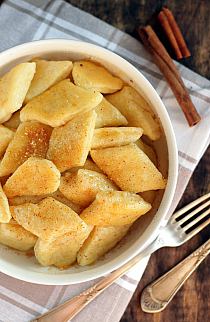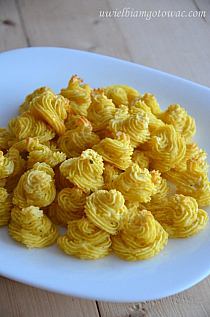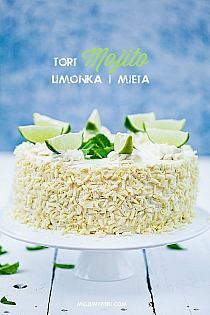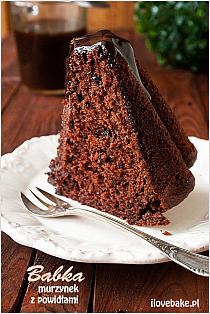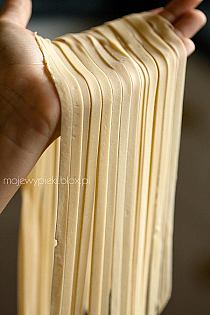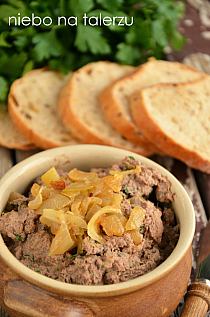-
Inspiracje
- Najnowsze
- Najpopularniejsze
- Zaskocz mnie
- Obserwowane
- MAGazyn
- Moda damska
- DIY - zrób to sam
- Kuchnia
- Uroda
- Wnętrza
- Humor
- Ogród
- Ślub
- Architektura
- Biżuteria
- Design
- Dziecko
- Film
- Fotografia
- Gadżety
- Historia
- Hobby
- Inne
- Książka
- Moda męska
- Muzyka
- Nauka i natura
- Plakaty i obrazy
- Podróże i miejsca
- Samochody i motocykle
- Sport i fitness
- Święta i uroczystości
- Tatuaż
- Zwierzęta
- Partnerzy
- KONKURS
-
Zakupy
-
ONA
- Ubrania
- Bielizna
- Bluzki
- Bluzy
- Dresy damskie
- Kombinezony
- Koszule
- Koszulki
- Kurtki
- Płaszcze
- Spodnie i leginsy
- Spodnie jeans
- Spódnice
- Stroje kąpielowe
- Sukienki i tuniki
- Swetry
- Szorty
- Zestawy
- Żakiety i kamizelki
- Buty
- Baleriny
- Botki
- Czółenka
- Espadryle
- Glany
- Japonki
- Kalosze
- Klapki
- Koturny
- Kowbojki
- Kozaki
- Obuwie Domowe
- Półbuty
- Sandały
- Sportowe i lifestyle
- Szpilki
- Tenisówki i Trampki
- Trapery i trekkingi
- Dodatki
- Bransoletki i zawieszki
- Breloki
- Czapki i kapelusze
- Etui
- Kolczyki, nausznice
- Kołnierzyki
- Kosmetyczki
- Naszyjniki, kolie i zawieszki
- Okulary
- Ozdoby do włosów
- Parasole
- Paski
- Pierścionki
- Plecaki
- Portfele
- Rękawiczki
- Skarpety
- Szaliki i chusty
- Torby i torebki
- Walizki
- Zegarki
- Zestawy biżuterii
- Zdrowie i uroda
- Balsamy
- Bazy i podkłady
- Cienie do oczu
- Dezodoranty
- Higiena jamy ustnej
- Korektory
- Kredki
- Kremy i serum
- Lakiery
- Manicure i pedicure
- Maseczki
- Odżywki
- Peeling
- Perfumy i wody perfumowane
- Pielęgnacja po opalaniu
- Płyny żele i mydła
- Pomadki i błyszczyki
- Pudry
- Róże
- Stylizacja włosów
- Szampony
- Toniki i demakijaż
- Tusze
- Wody toaletowe
- Zestawy
-
ON
- Ubrania
- Bielizna
- Bluzy
- Kąpielówki
- Koszule
- Kurtki i płaszcze
- Marynarki kamizeki
- Spodenki i szorty
- Spodnie
- Swetry
- T-shirt długi rękaw
- T-shirt i Polo
- KULTURA
- GADŻETY
- DZIECKO
-
DOM I WNĘTRZE
- Wnętrza
- Akcesoria dom
- Ceramika i szkło
- Do baru
- Do biura
- Do kuchni
- Kubki kufle i kieliszki
- Lustra
- Nakrycia stołu
- Oświetlenie
- Plakaty i tablice
- Pościele, poduszki i nakrycia
- Przechowywanie
- Tekstylia
- Zegary i budziki
-
Marki
- MARKI
- Adidas
- Adriatica
- Alter Core
- Armani
- Asics
- Atlantic
- Azzaro
- Barbie
- Bburago
- Be-U
- Benetton
- Bering
- Black Plum
- Burberry
- Bvlgari
- Cacharel
- Calvin Klein
- Canon
- Carolina Herrera
- Carrera
- Casio
- Celestron
- Chanel
- Chloe
- Clinique
- Cobi
- Coloud
- Converse
- David Beckham
- Davidoff
- Delbana
- Diesel
- Dior
- DISNEY
- DKNY
- Dolce & Gabbana
- DOXA
- Dr. Martens
- Dunhill
- Ecco
- Elizabeth Arden
- Esprit
- EVC DSGN
- Festina
- Fila
- Fisher Price
- Frederique Constant
- Givenchy
- Gucci
- Guerlain
- Guess
- Hasbro
- Helena Rubinstein
- Hermes
- Hi-Tec
- Hugo Boss
- Hunter
- Iceberg
- Ingersoll
- Issey Miyake
- Jean Paul Gaultier
- Jennifer Lopez
- Jil Sander
- Jimmy Choo
- Joop!
- Juicy Couture
- Kappa
- Kenzo
- Komono
- Lacoste
- Lalique
- Lancome
- Lanvin
- Lee
- Lego
- Lorus
- Marc Jacobs
- Marshall
- Masaki Matsushima
- Matchbox
- Mattel
- Max Factor
- Max&Co
- Mc Arthur
- Mizuno
- Mont Blanc
- Moschino
- Mr. Gugu & Miss Go
- My Little Pony
- New Balance
- Nike
- Nikon
- Nina Ricci
- Ninety Eight Clothing
- Nivea
- Nixon
- Nooka
- Obaku
- Onitsuka Tiger
- Paco Rabanne
- Pentax
- Pewex
- Pierre Cardin
- Playboy
- Prada
- Puma
- Ralph Lauren
- Reebok
- Regatta
- Revlon
- Rexona
- Rider
- Salomon
- Salvatore Ferragamo
- Shelyak
- Shiseido
- Skagen
- Swarovski
- Takahashi
- Thierry Mugler
- Timberland
- Timex
- Tommy Hilfiger
- UGC
- Urbanears
- Valentino
- Vans
- Versace
- Viktor & Rolf
- Vixen
- Welly
- William Optics
- Wrangler
- Yimaida
- Yukon
- Yves Saint Laurent
-
ONA
-
Szukaj
- Losuj
Kuchnia
My kitchen
When was the last time you stopped for a few minutes to savor the taste of your coffee?
There are many factors affecting coffee flavor: coffee variety, coffee origin, coffee production process, processing method, roasting, coffee extraction process.
Caffeine is similar to other addictive substances in that it can be physically addictive. This is because regular, consistent caffeine intake causes changes in brain chemistry.
For example, your brain cells may begin to produce more adenosine receptors as a way to compensate for the receptors that are blocked by caffeine. In turn, the higher number of receptors requires you to consume more caffeine to achieve the same "caffeine fix. This explains how the average coffee drinker builds tolerance over time.
On the other hand, suddenly cutting off the supply of caffeine can suddenly leave your brain with a large number of free receptors for adenosine to bind. This produces a strong feeling of fatigue and is thought to be the main reason for caffeine withdrawal symptoms often associated with eating cold turkey. These adverse effects can be avoided by using a caffeine calculator - https://roastercoffees.com/caffeine-calculator to calculate the amount of caffeine in each cup of coffee.
Want to know how to taste coffee properly? Let's explore this interesting world together.
The sour taste is on the sides of the tongue. When you taste and feel the acidity in coffee, it doesn't refer to the PH, it refers to the sensation on your tongue.
Coffee lovers are sometimes surprised by the acidity they like. Coffee's sour taste is common in some quality coffees.
When you think about acidity, think about how coffee feels in your mouth. To give you a better understanding of acidity, try associating bananas, coffee, and other foods that are lower in acidity to provide a rounder, softer feeling. Imagine the richer, brighter, bolder feel of more acidic foods like oranges, lemons, and vinegar.
Texture is the weight you feel on your tongue. You may never fully feel the "weight" of the liquid in your mouth.
Try to relate some liquids with different specific weights, such as the lightness of zero fat milk, the consistency and consistency of whole milk, to the weight of all flavors.
Flavor is the overall taste of coffee, which can be difficult to describe in words at first. You can start with the basics.
Coffee may have the sweetness of chocolate or caramel. There may be many different flavours, such as the sweetness of fruit such as cherries or berries. There may also be sour notes that remind you of lemon, grapefruit, or even red wine. You may also experience a nutty or vanilla flavor.
Read More: Something About Coffee And Beer - https://www.flyingsolo.com.au/members/coffeegeek/profile/
Try comparing different coffee flavors.
Another way to deepen the sensory experience is to compare two types of coffee. For example, compare coffee from two different producing regions to see which is more bitter, which is thicker, and which has the aroma.
You can also compare the flavor of the same coffee under different extraction methods. You will soon find that the extraction method has a significant effect on the flavor of the beans.
Get More: Four things you should know about geisha coffee - https://keymander.iogear.com/profile/19042/coffeelover
Focus on these four elements: aroma, acidity, taste, and flavor. You will gradually discover that these four elements make up the flavor expression of coffee.
With just a few practice sessions, you can begin to build your sensory world and enrich your coffee experience based on your personal experience. You can read the flavor descriptions on the packaging of coffee products and try to experience the flavor as you drink it.
References:
Four Keys To Brewing Delicious Cold Brew Coffee - https://coffee.blogo.jp/four-keys-to-brewing-delicious-cold-brew-coffee.html
Selection And Maintenance Of Home Grinder - https://www.longcovidsos.org/profile/coffeegeek/profile
There are many factors affecting coffee flavor: coffee variety, coffee origin, coffee production process, processing method, roasting, coffee extraction process.
Caffeine is similar to other addictive substances in that it can be physically addictive. This is because regular, consistent caffeine intake causes changes in brain chemistry.
For example, your brain cells may begin to produce more adenosine receptors as a way to compensate for the receptors that are blocked by caffeine. In turn, the higher number of receptors requires you to consume more caffeine to achieve the same "caffeine fix. This explains how the average coffee drinker builds tolerance over time.
On the other hand, suddenly cutting off the supply of caffeine can suddenly leave your brain with a large number of free receptors for adenosine to bind. This produces a strong feeling of fatigue and is thought to be the main reason for caffeine withdrawal symptoms often associated with eating cold turkey. These adverse effects can be avoided by using a caffeine calculator - https://roastercoffees.com/caffeine-calculator to calculate the amount of caffeine in each cup of coffee.
Want to know how to taste coffee properly? Let's explore this interesting world together.
The sour taste is on the sides of the tongue. When you taste and feel the acidity in coffee, it doesn't refer to the PH, it refers to the sensation on your tongue.
Coffee lovers are sometimes surprised by the acidity they like. Coffee's sour taste is common in some quality coffees.
When you think about acidity, think about how coffee feels in your mouth. To give you a better understanding of acidity, try associating bananas, coffee, and other foods that are lower in acidity to provide a rounder, softer feeling. Imagine the richer, brighter, bolder feel of more acidic foods like oranges, lemons, and vinegar.
Texture is the weight you feel on your tongue. You may never fully feel the "weight" of the liquid in your mouth.
Try to relate some liquids with different specific weights, such as the lightness of zero fat milk, the consistency and consistency of whole milk, to the weight of all flavors.
Flavor is the overall taste of coffee, which can be difficult to describe in words at first. You can start with the basics.
Coffee may have the sweetness of chocolate or caramel. There may be many different flavours, such as the sweetness of fruit such as cherries or berries. There may also be sour notes that remind you of lemon, grapefruit, or even red wine. You may also experience a nutty or vanilla flavor.
Read More: Something About Coffee And Beer - https://www.flyingsolo.com.au/members/coffeegeek/profile/
Try comparing different coffee flavors.
Another way to deepen the sensory experience is to compare two types of coffee. For example, compare coffee from two different producing regions to see which is more bitter, which is thicker, and which has the aroma.
You can also compare the flavor of the same coffee under different extraction methods. You will soon find that the extraction method has a significant effect on the flavor of the beans.
Get More: Four things you should know about geisha coffee - https://keymander.iogear.com/profile/19042/coffeelover
Focus on these four elements: aroma, acidity, taste, and flavor. You will gradually discover that these four elements make up the flavor expression of coffee.
With just a few practice sessions, you can begin to build your sensory world and enrich your coffee experience based on your personal experience. You can read the flavor descriptions on the packaging of coffee products and try to experience the flavor as you drink it.
References:
Four Keys To Brewing Delicious Cold Brew Coffee - https://coffee.blogo.jp/four-keys-to-brewing-delicious-cold-brew-coffee.html
Selection And Maintenance Of Home Grinder - https://www.longcovidsos.org/profile/coffeegeek/profile
MA==
Podobne inspiracje
37
1
Pierogi leniwe - Buszująca w kuchni
8
1
Chili con carne - Buszująca w kuchni
1
1
When was the last time you stopped for a few minutes to…
457
192
Makaron
100 g mąki
1 jajko
szczypta soli
306
Pierogi z ziemniakami, kaszą gryczaną i borowikami - Bu…
35
Honey Lemon Ginger Jar - Natural Cold & Flu Remedy - My…
23
1693
Ciasto na pierogi wg Magdy Gessler - pierogi / kluski -…
1829
Lekki deser z malinami i mascarpone
Czas przygotowania…
RoasterCoffeees is a website that provides coffee lover…
W 2 innych kolekcjach



